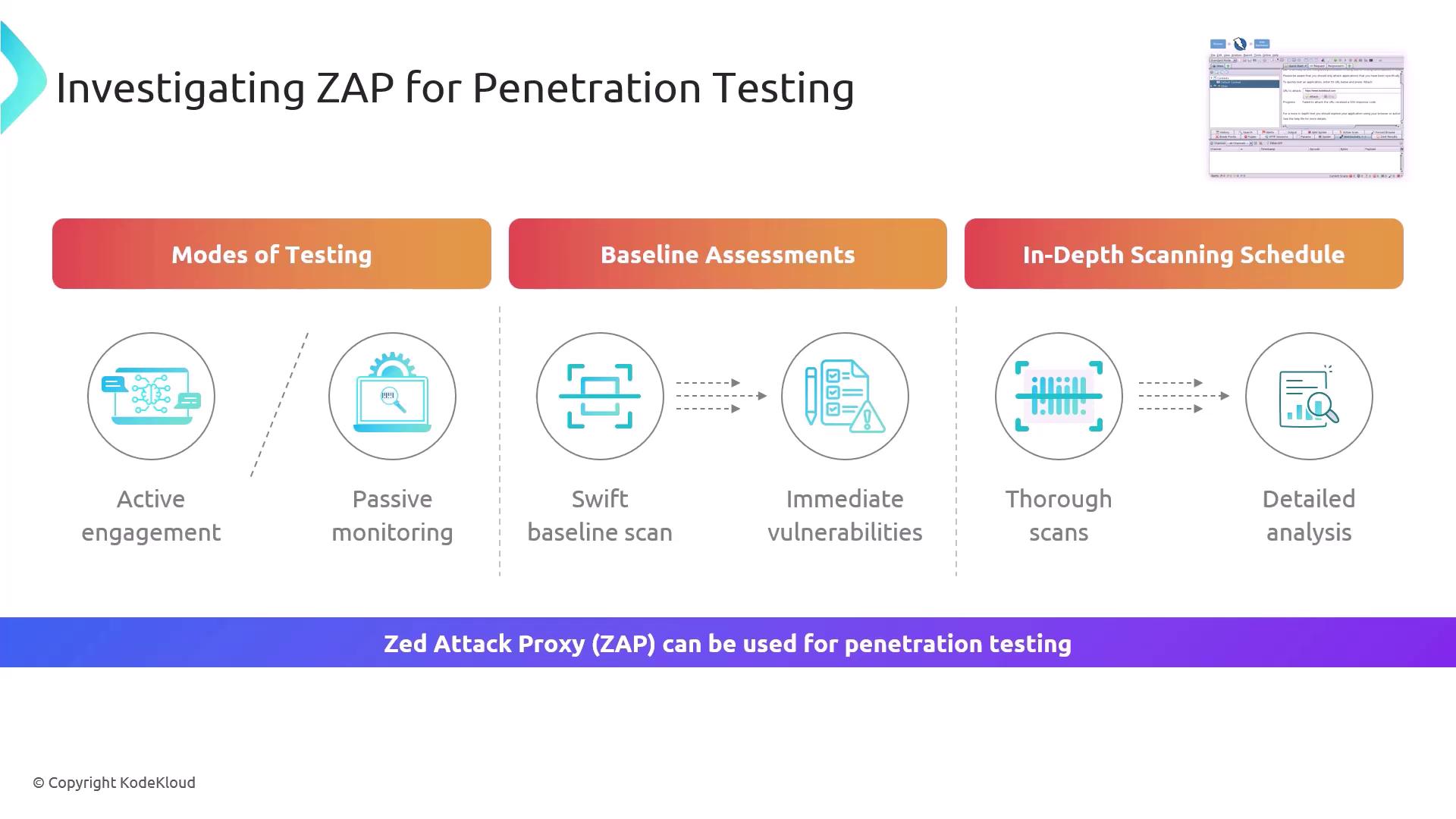AZ-400: Designing and Implementing Microsoft DevOps Solutions
Implement Security and Validate Code Bases for Compliance
Investigating ZAP for Penetration Testing
OWASP Zed Attack Proxy (ZAP) is a free, open-source web application security scanner trusted by developers and security teams. Operating as an HTTP/HTTPS proxy, ZAP intercepts and logs traffic between your browser and the target application. This setup lets you inspect, modify, and replay requests to uncover security flaws early.
Key Benefits
- Open-Source & Community-Driven: Backed by OWASP with regular updates.
- Extensible Add-Ons: Customize scans with community scripts and extensions.
- CI/CD Ready: Automate security checks in your pipeline for continuous feedback.
Testing Modes
| Scan Mode | Description | Ideal Use Case |
|---|---|---|
| Passive Scanning | Observes traffic without alteration, flags missing headers or insecure cookies | Ongoing development |
| Active Scanning | Injects payloads and probes responses to detect vulnerabilities automatically | Pre-release security testing |
Baseline vs. In-Depth Scans
| Scan Type | Scope | Duration | Use Case |
|---|---|---|---|
| Baseline Assessment | Quick, non-intrusive checks | Minutes | CI/CD pre-merge checks |
| In-Depth Analysis | Comprehensive, rule-based testing | Hours | Nightly or weekly audits |

Warning
Only perform active scans on applications you own or have explicit permission to test. Unauthorized scanning may violate legal or organizational policies.
Note
By default, ZAP listens as a proxy on http://127.0.0.1:8080. Configure your browser or API client to route traffic through ZAP for accurate results.
Getting Started with ZAP CLI
Scan from the command line to integrate seamlessly with scripts and pipelines:
# Run a quick baseline scan and generate an HTML report
zap-baseline.py -t https://example.com -r baseline-report.html
# Execute a full-depth active scan with detailed reporting
zap-full-scan.py -t https://example.com -r full-scan-report.html
Integrating ZAP into Your Workflow
- Automate baseline assessments on every build for immediate vulnerability feedback.
- Enable passive scanning during feature development to catch missing headers early.
- Schedule full active scans overnight for exhaustive coverage and historic tracking.
Links and References
Watch Video
Watch video content